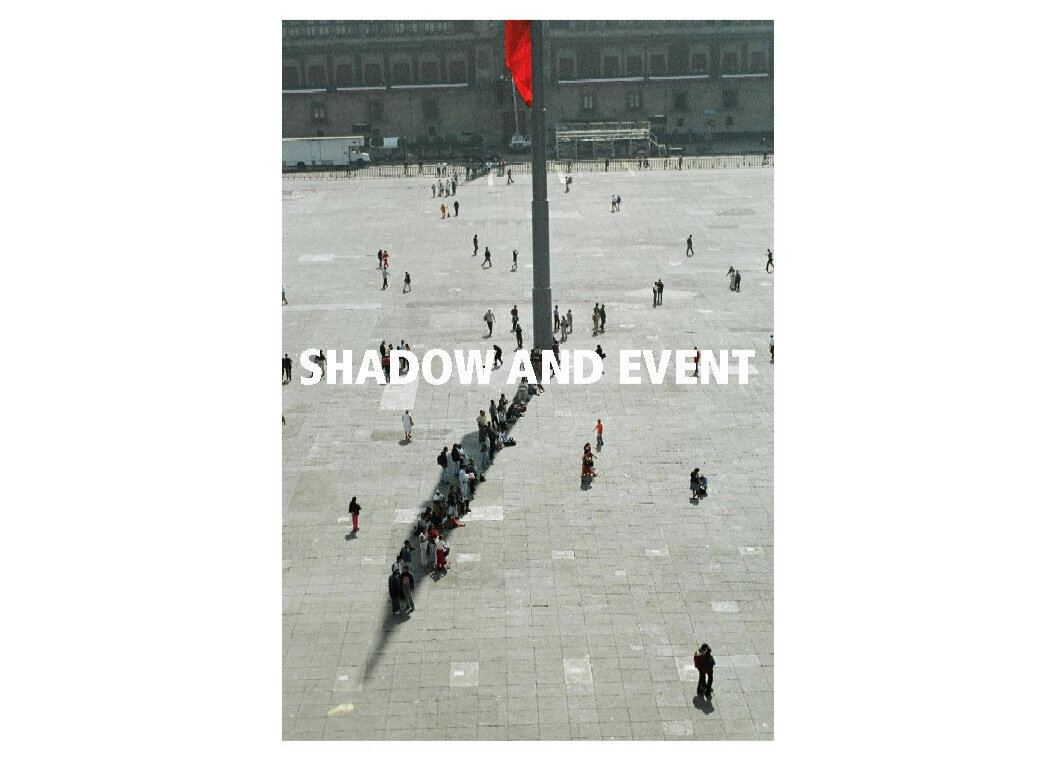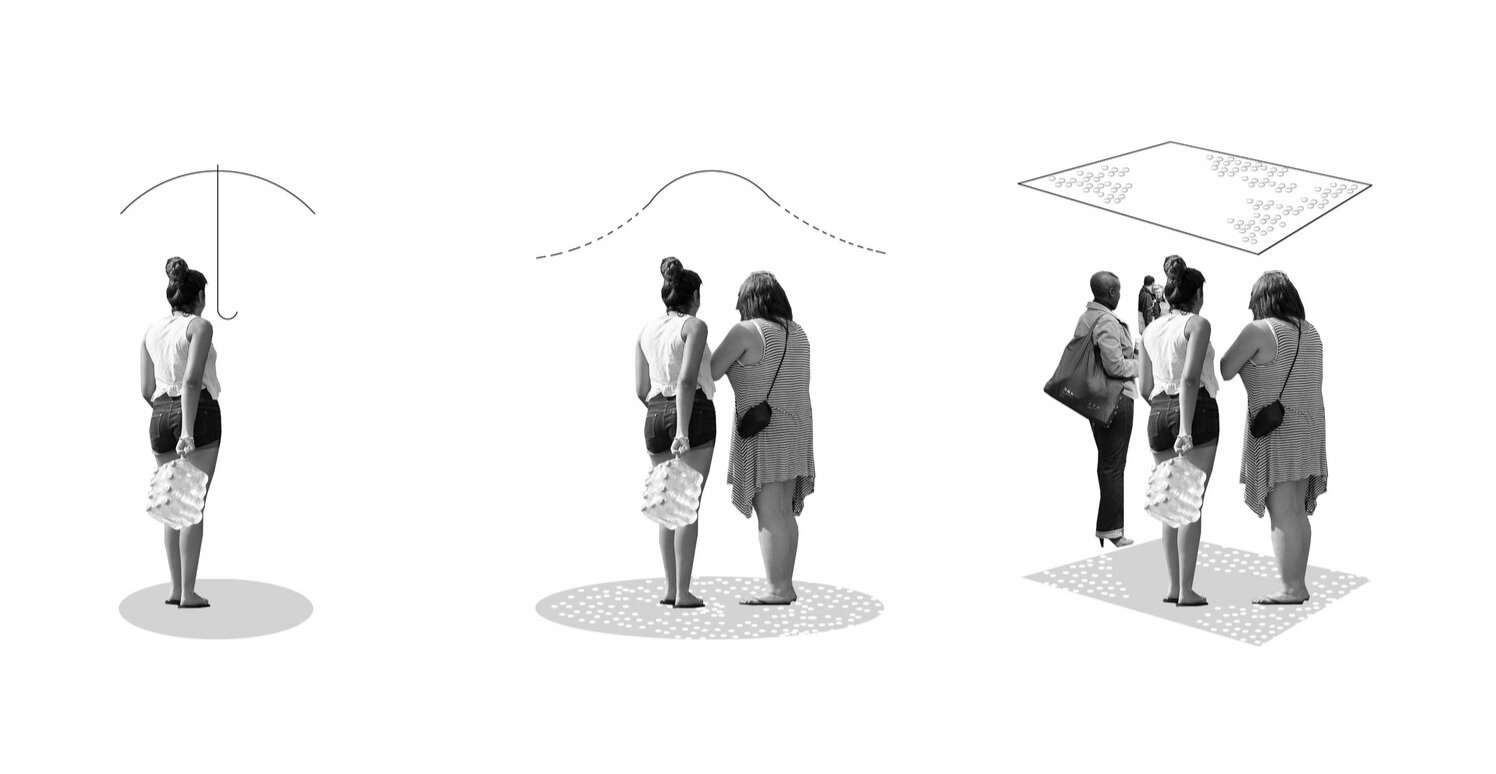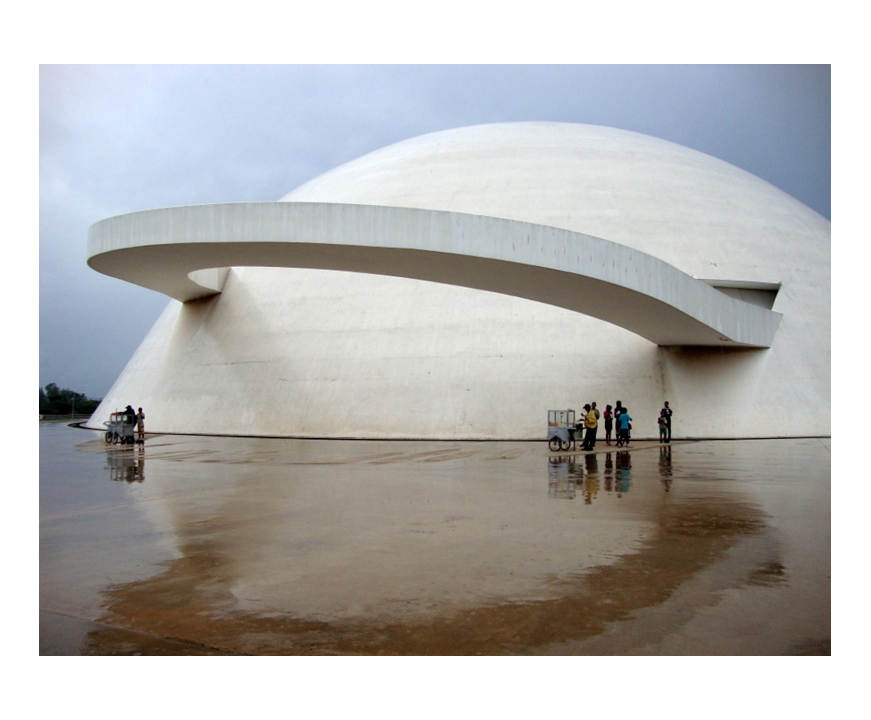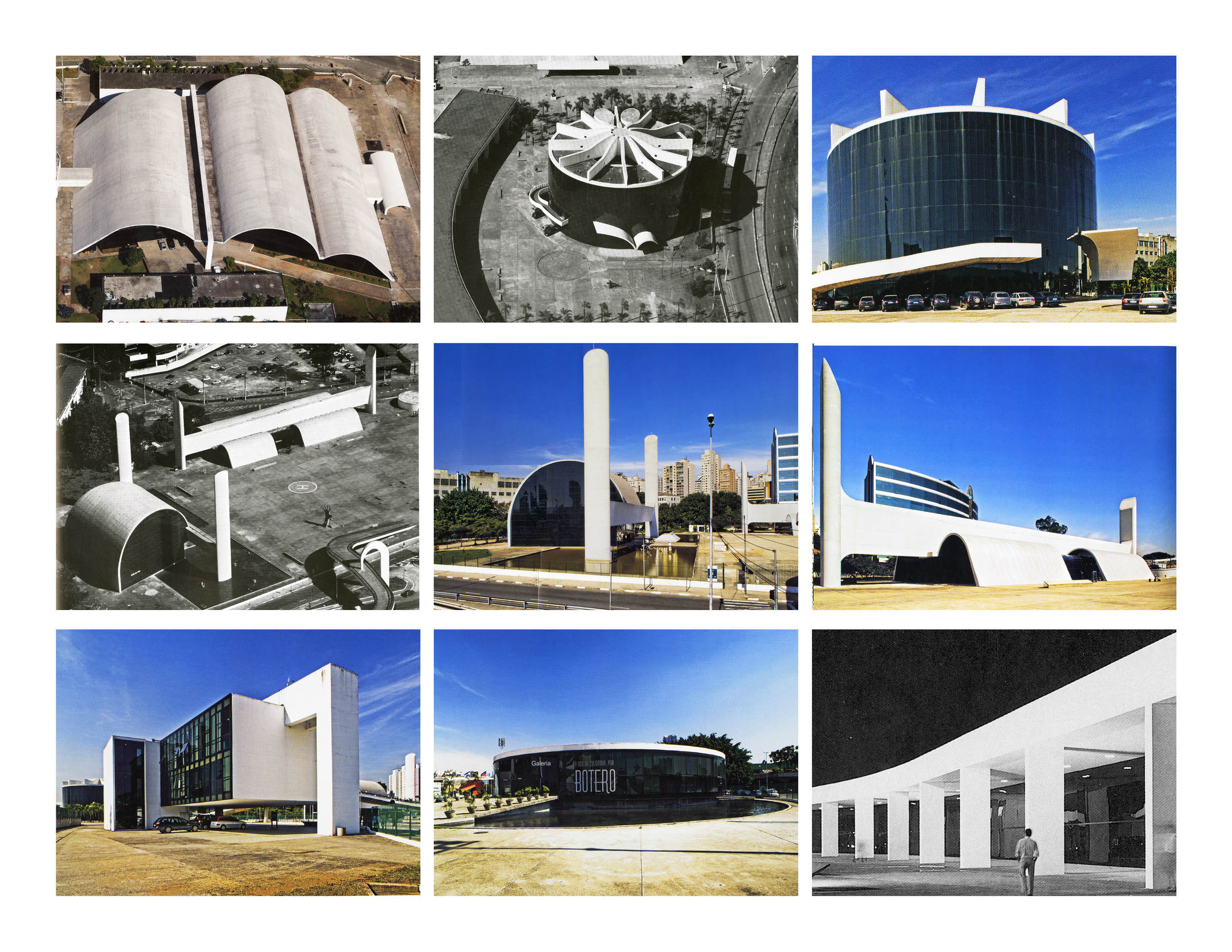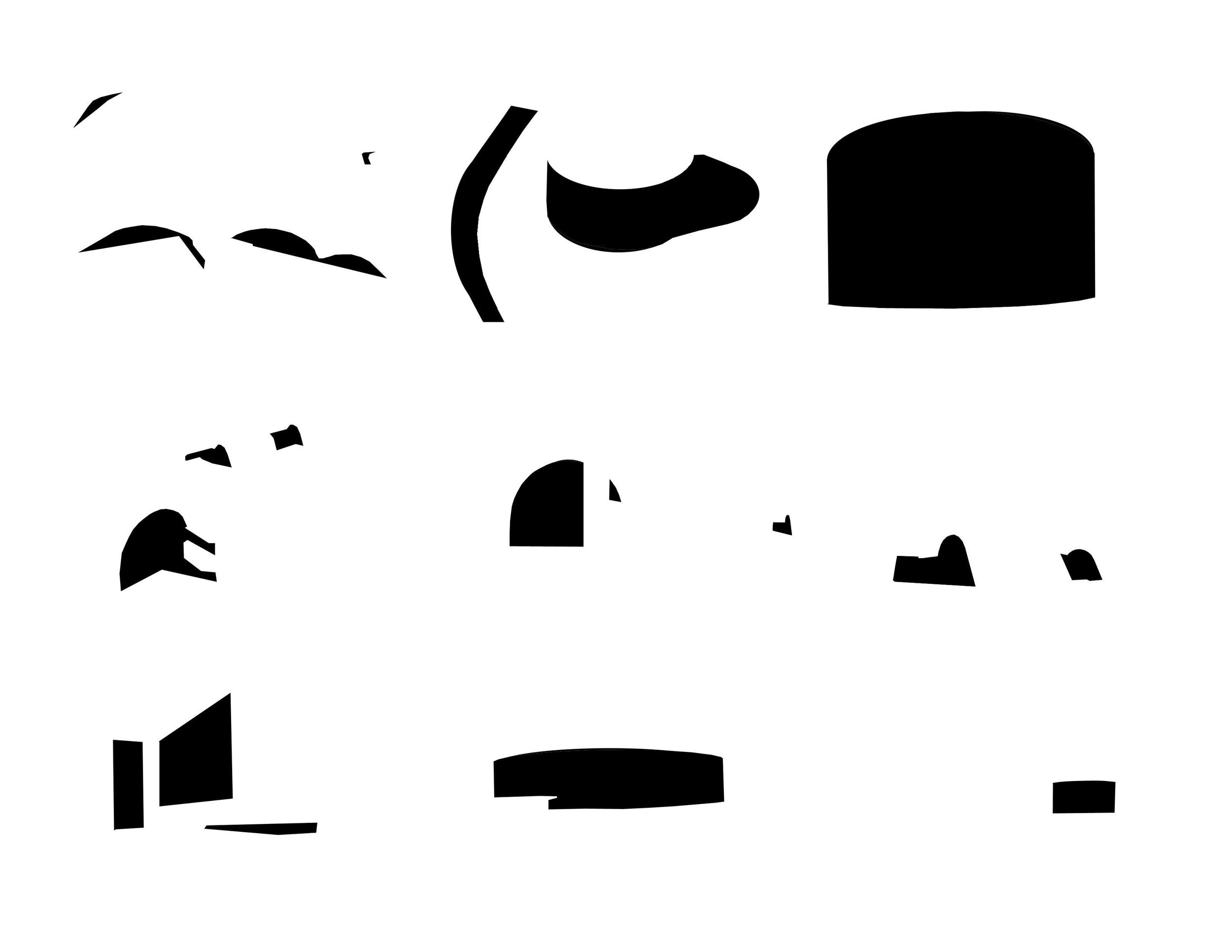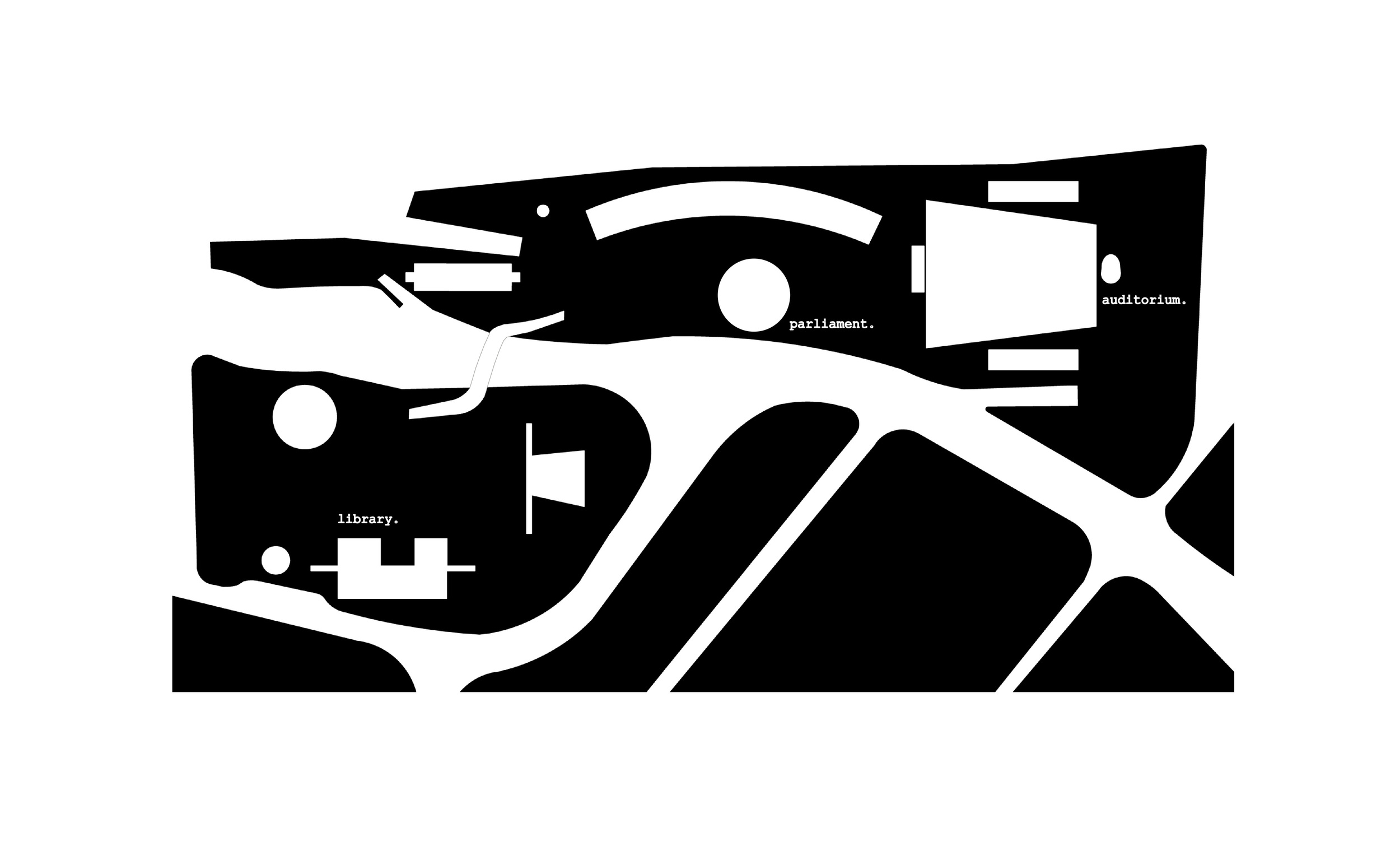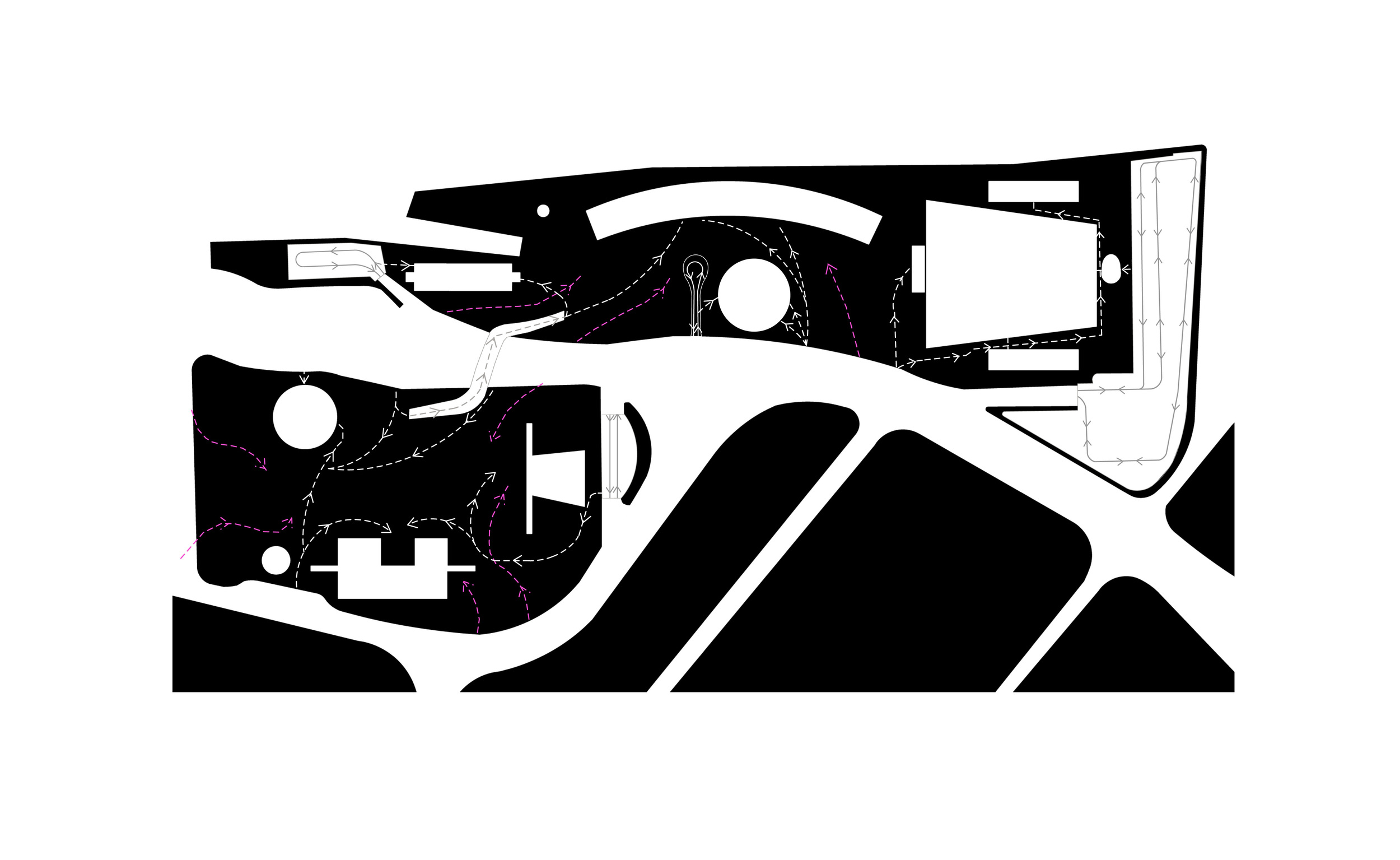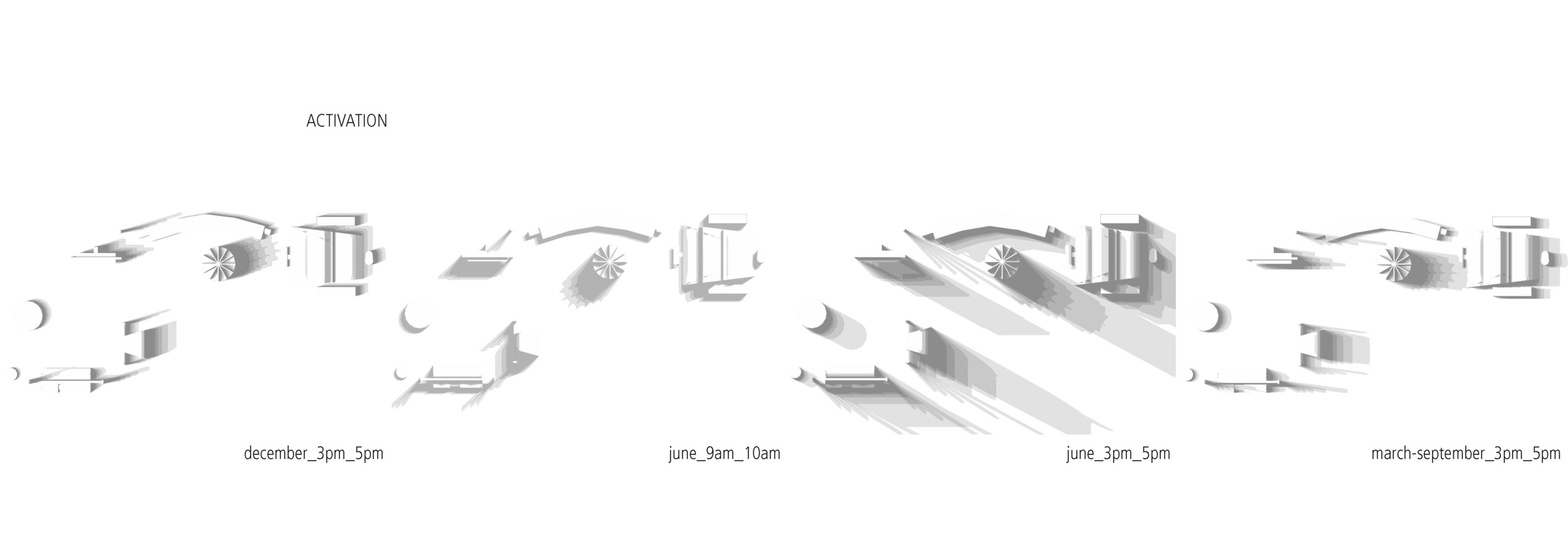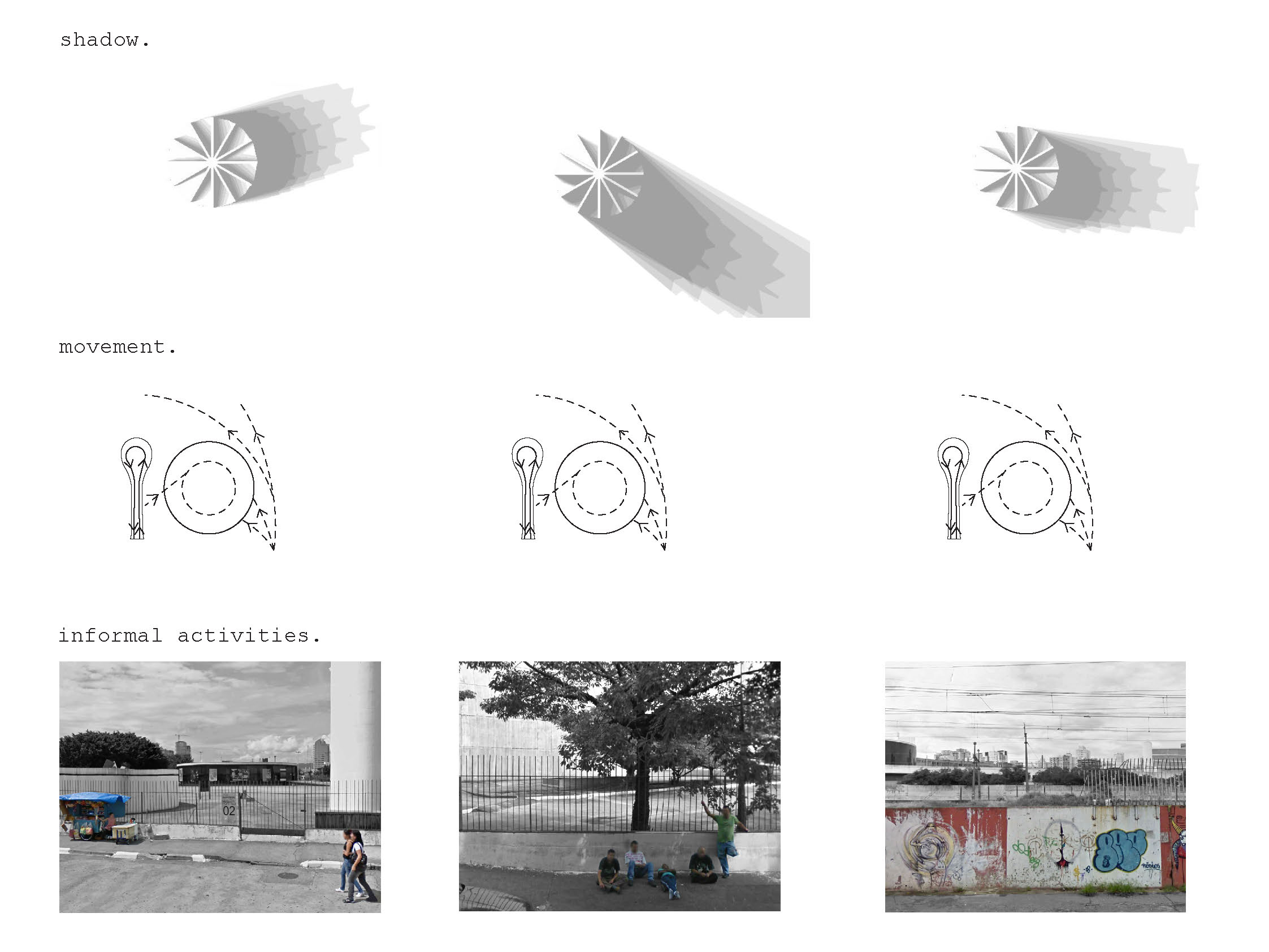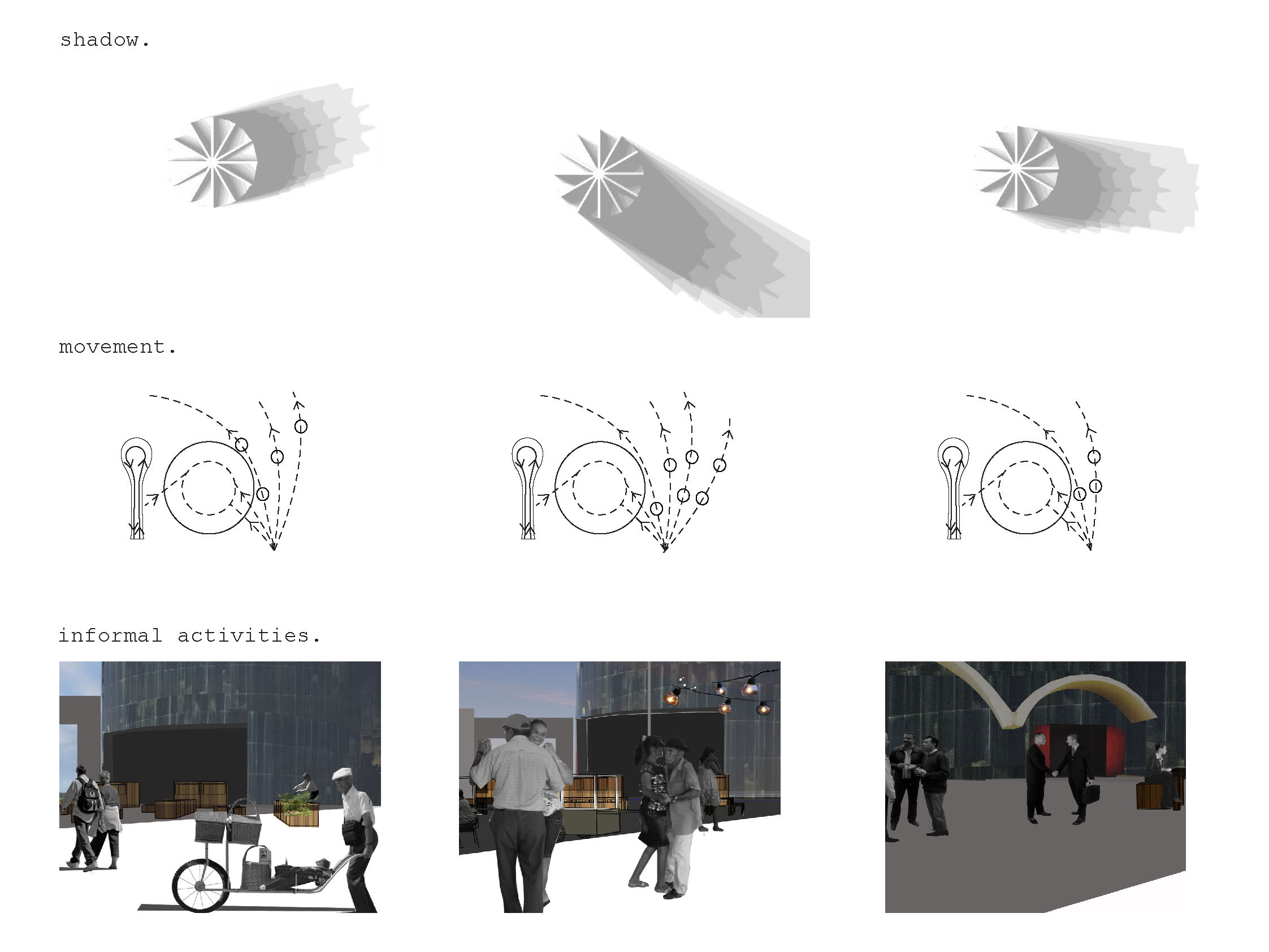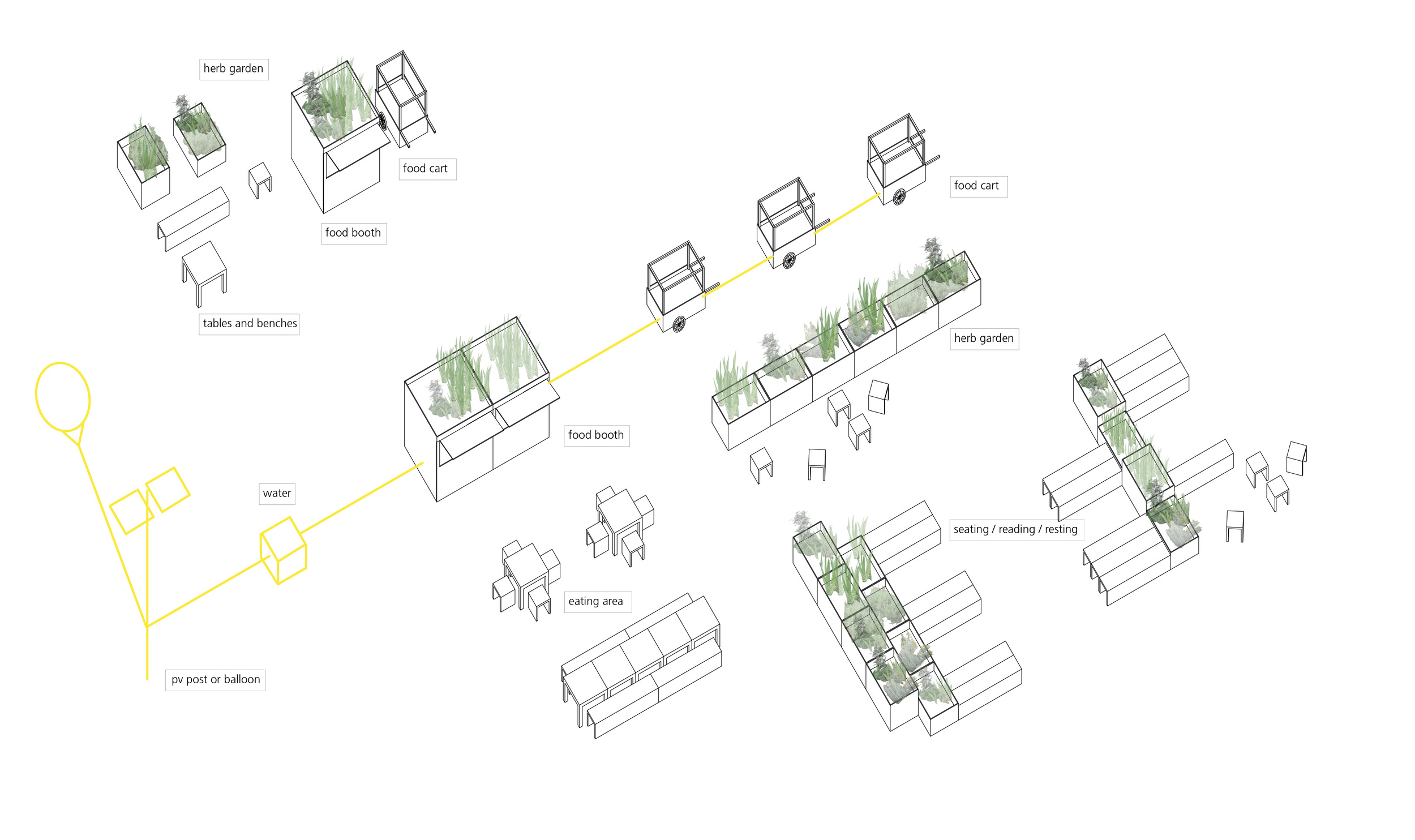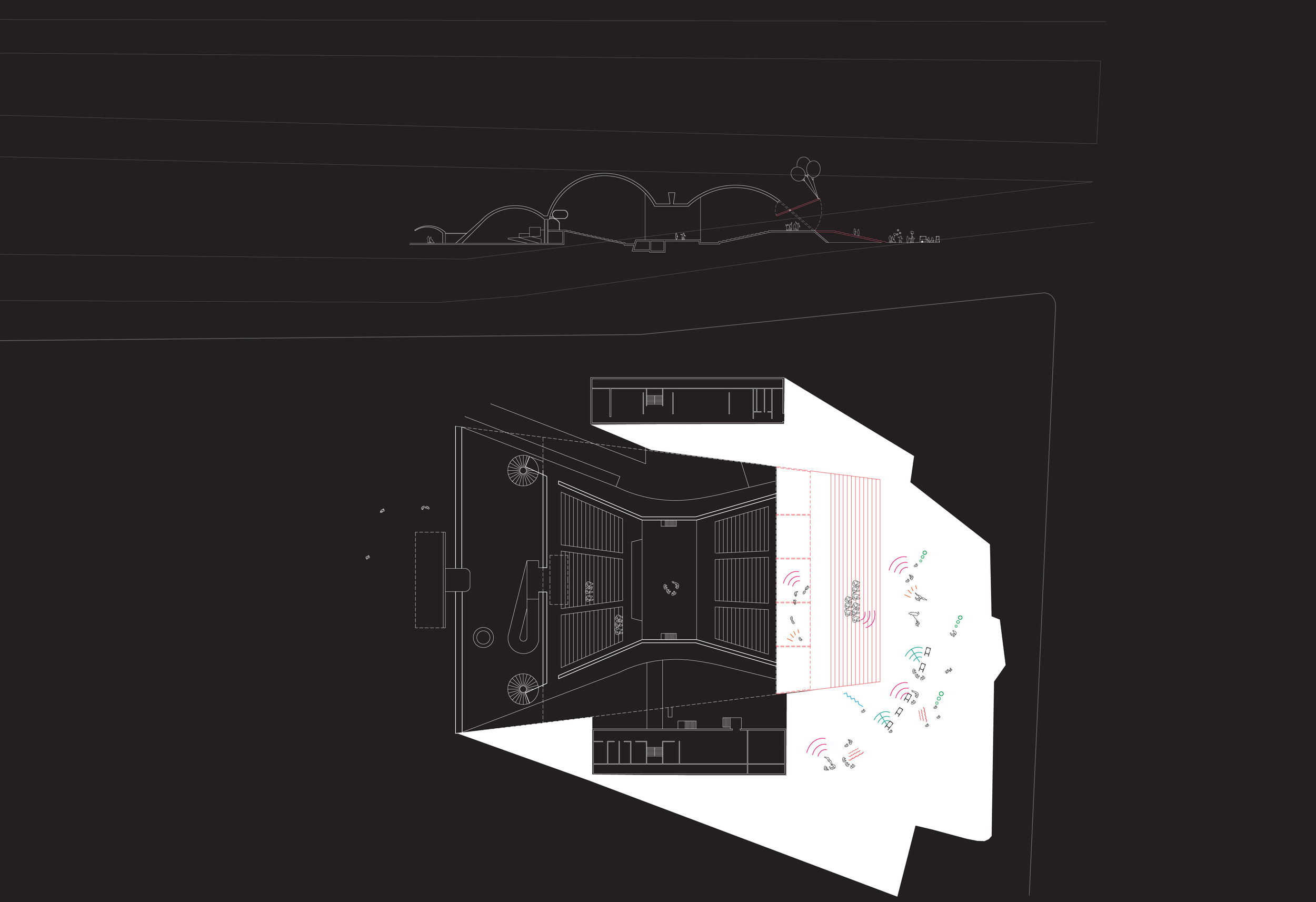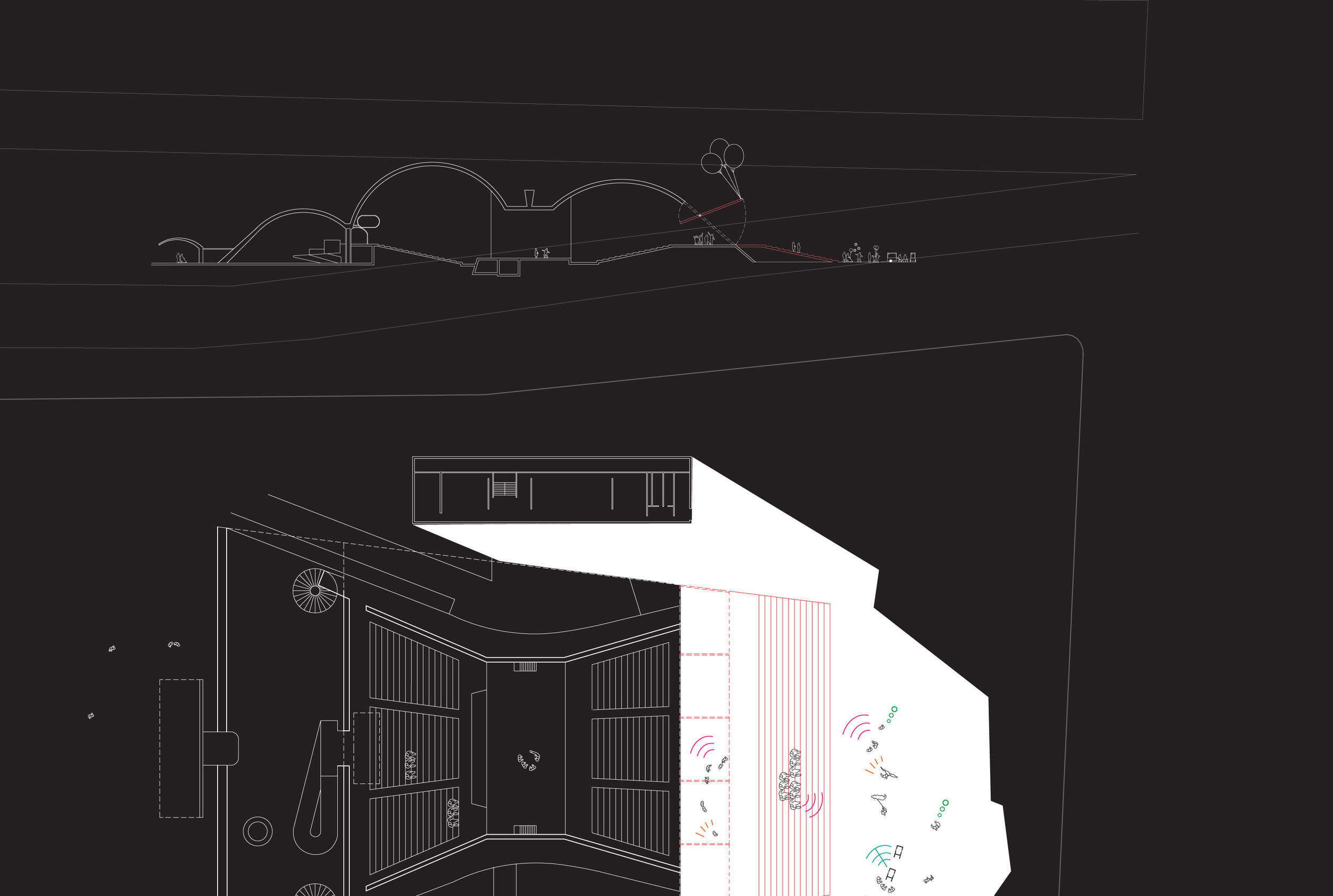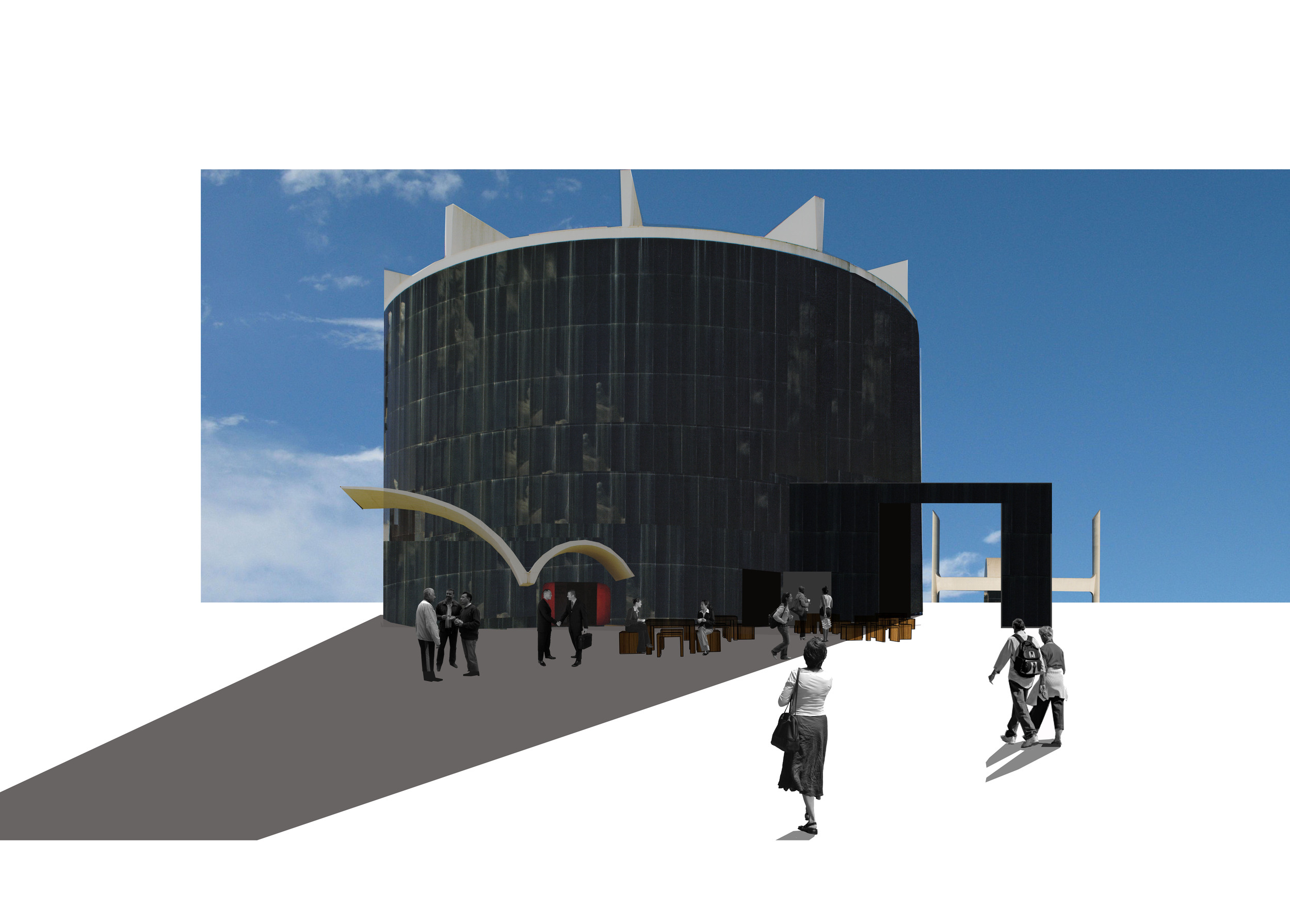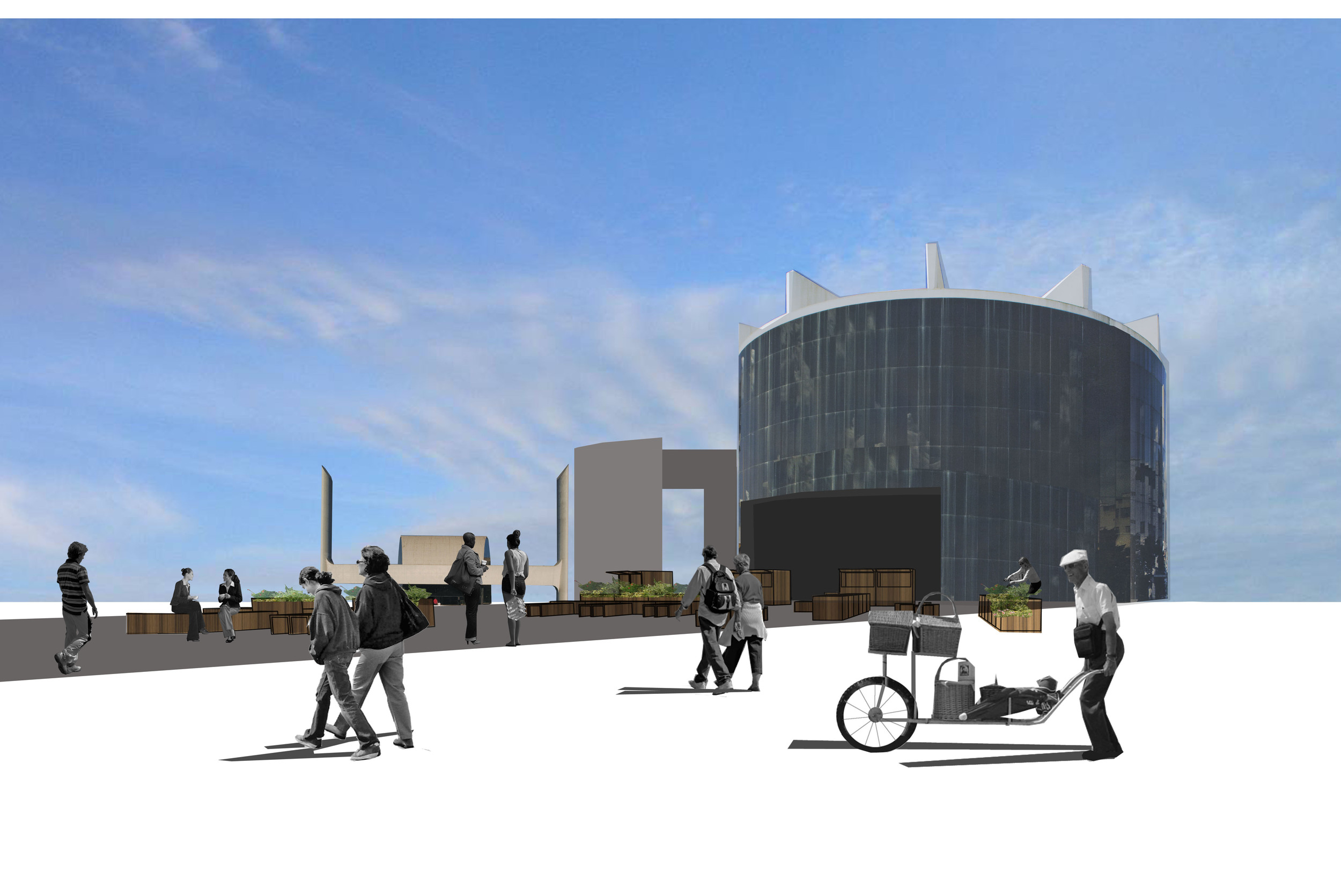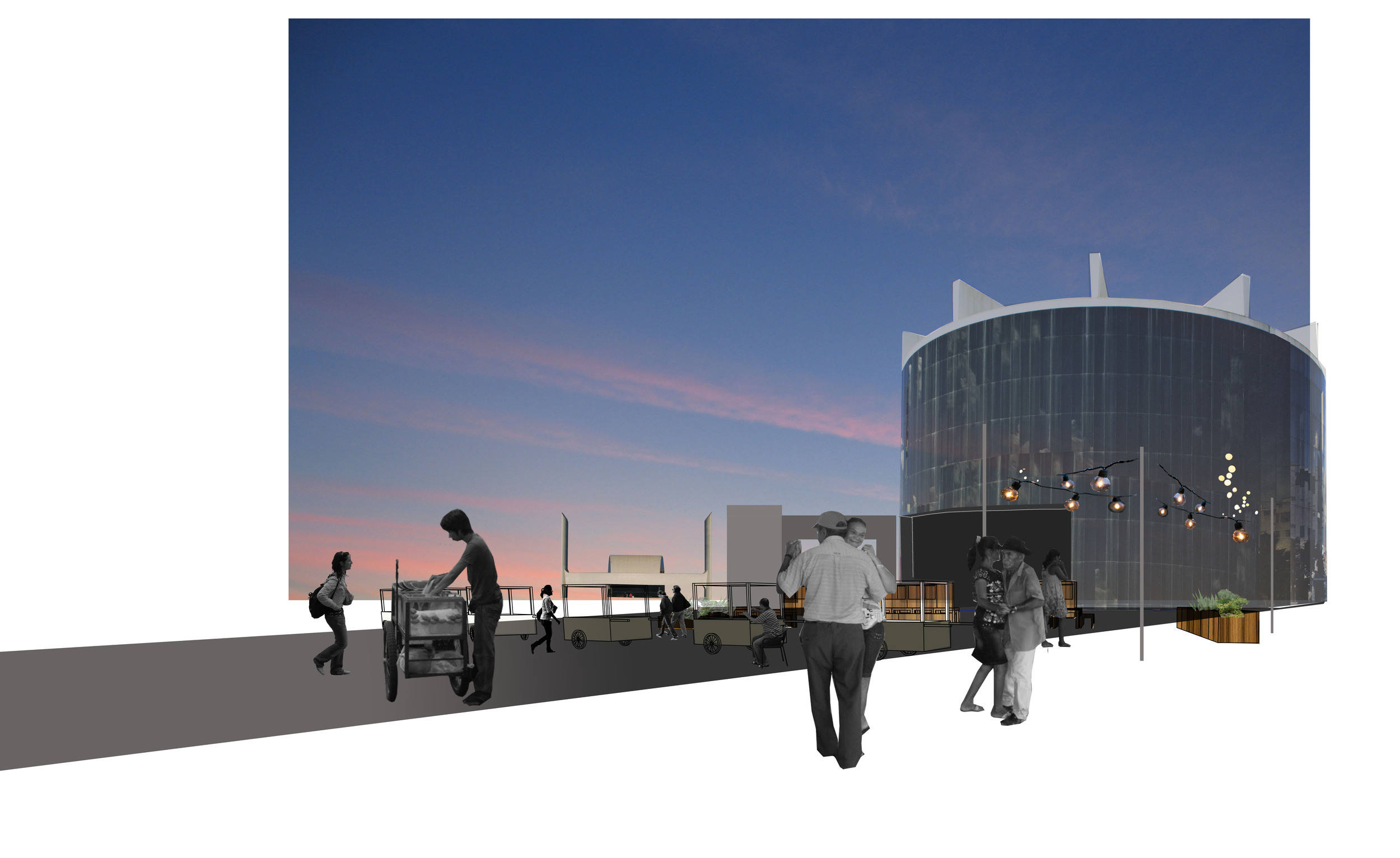Index
Shadow Scripts
São Paulo, 2011
The Latin American Memorial, designed by Oscar Niemeyer, is a ‘collection’ of seven buildings and two plazas connected by a bridge. People need shade. The project offers very little protection from the sun. On some level, Niemeyer understood this; at least he had an intention. Several of his forms seem to float, like tents, but they do not create a place where people get together and the main plaza remains empty. The building forms represent a rigid utopian vision that creates shadows without shadows; it seeks to control light. Could that also be a way to control people and avoid friction? The goal of this project is to investigate and activate these institutional shadows.
To understand this site, it is necessary to consider the circulation. The site plan and the buildings are islands surrounded by a security fence, with limited points of access. Through the site and the project analysis it is possible to identify shadow, movement and informal activities, most of them happening outside the Memorial walls. So, how can we break down some of these walls? The goal is to open up the buildings, bringing the outdoor in and activating Niemeyer’s tent structure.
A series of modular and mobile elements is created to help this ‘activation’, and include tables, food carts, herb gardens and lounge chairs. Food carts would promote public gathering on the steps, helping activate the existing shadow. Shadow becomes public space, represented in the drawings in white. Photovoltaic panels and advanced photovoltaic fabrics on balloons could reach into the sunlight and help power radios and other equipment. A whole range of new activities can happen throughout the site: people talking, thinking, sleeping, eating, reading, dancing. The ‘noise’, which was kept outside the memorial walls and fences, is now brought inside, activating the once-empty monumental plaza.


